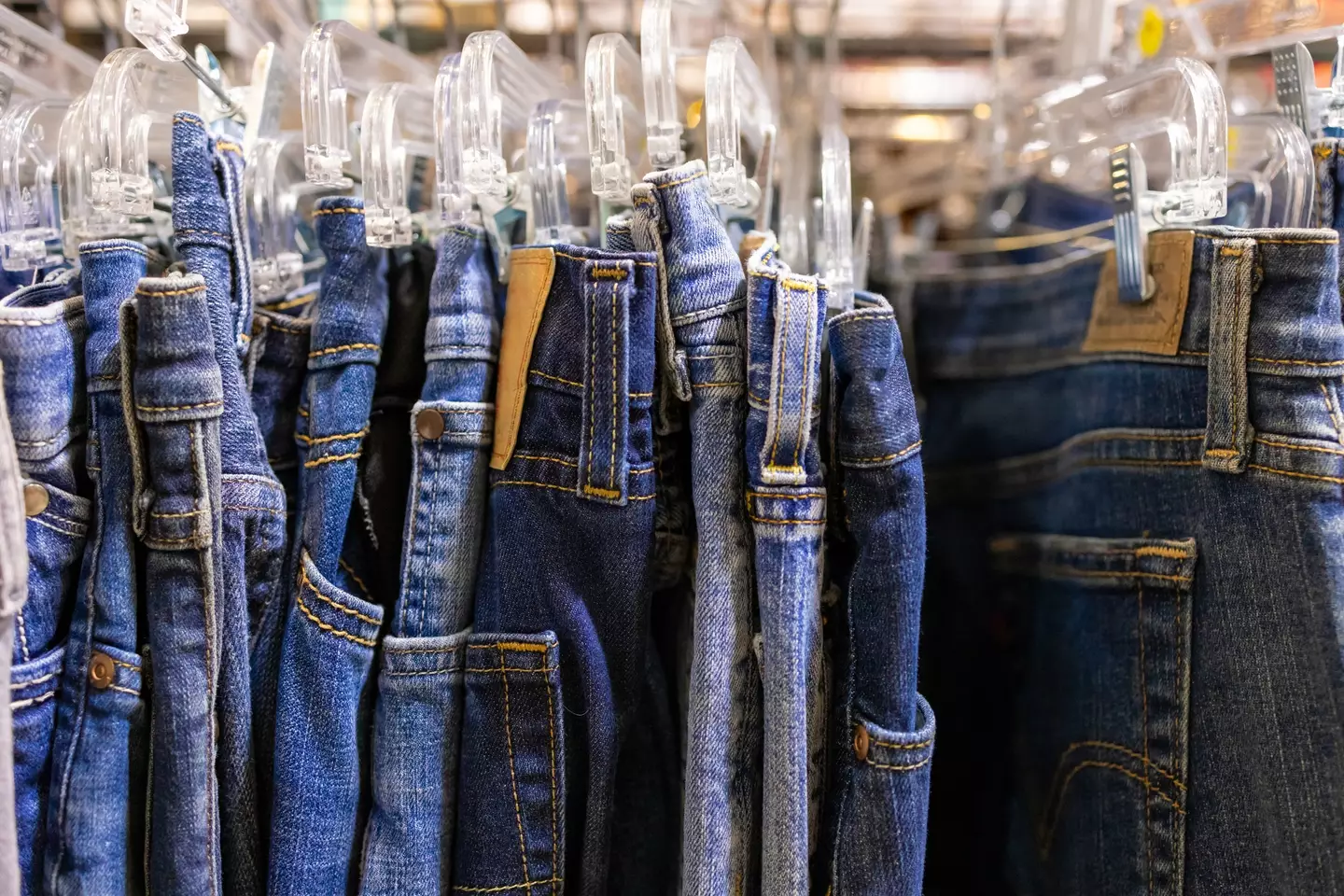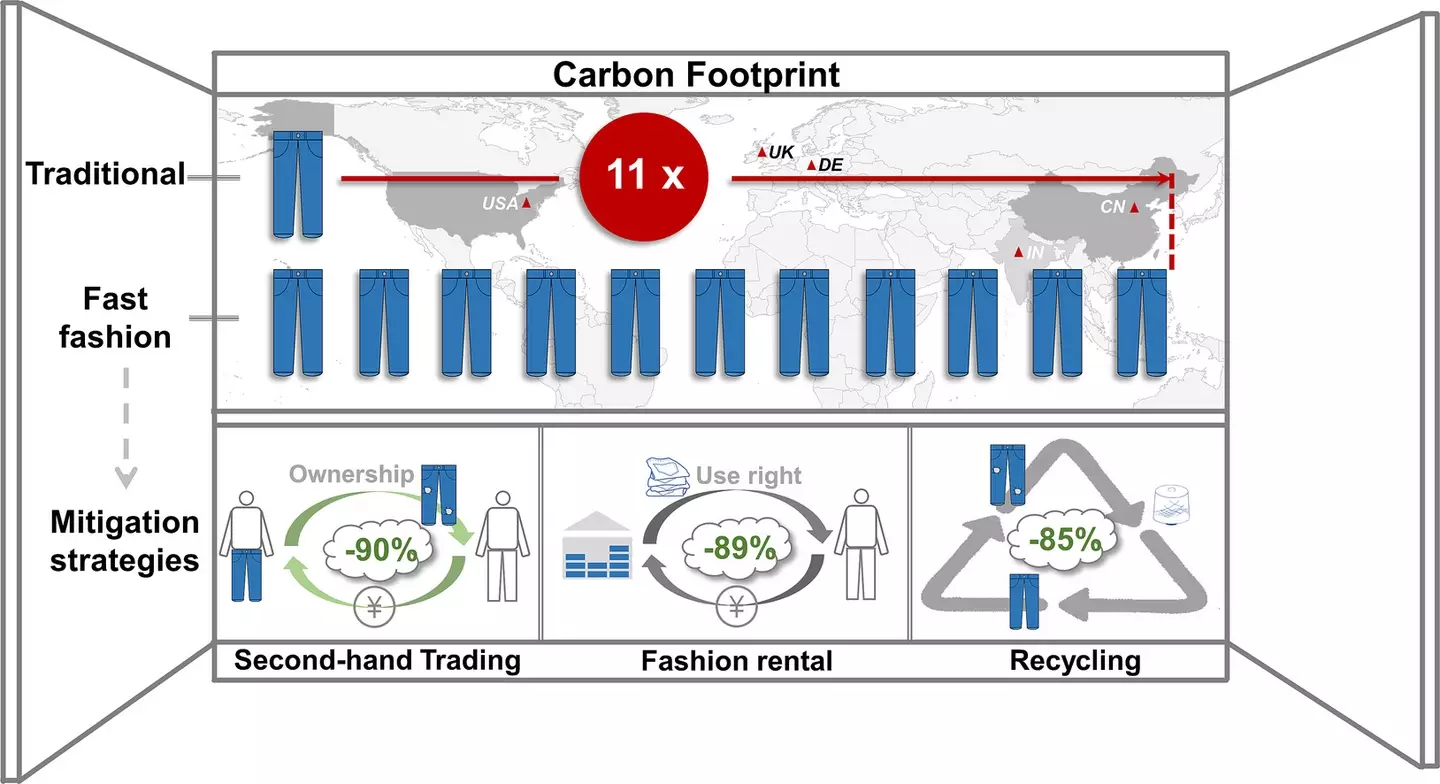A group of researchers from the Guangdong University of Technology in Guangdong, China conducted an investigation into the carbon footprint of fast fashion consumption honing in on the production and overall lifecycle of jeans in particular.
Led by Ya Zhou, the study found jeans have ‘a significant impact on the environment – and the extent of which will probably surprise you.
Most of us wear jeans pretty often, but the question is, do you buy jeans from a fast fashion brand which aren’t as good quality and don’t last that long meaning you don’t end up wearing them much?
Oh and let’s not forget the speed in which they’re made and then shipped to the store or your door. Or do you opt for a more environmentally friendly fashion brand and jeans of likely higher quality which will see you through a good chunk of time?
Well, this study might make you think twice the next time you load a pair or two into your shopping cart during an online shopping spree.
The environmental impacts of the fast fashion industry include water use, chemical pollution, C02 emissions and textile waste.
All of these factors were taken into consideration while using the lifecycle assessment method to figure out just how damaging a pair of fast fashion jeans is for the world around us.

Starting with the jeans in raw cotton form and tracking their lifecycle all the way to the point of them being disposed in an incinerator, the scientists discovered fast fashion jeans have a carbon footprint a whopping 95-99 percent higher than that of more ethically responsible jeans.
The study reveals: “The carbon footprint of fast fashion consumption was 2.50 kg of carbon dioxide equivalent (kgCO2e), 11 times higher than that of traditional fashion consumption.
“It means one wear jeans leads to 2.50 kg CO2e, equivalent to 6.4 miles for an average gasoline-powered passenger vehicle (EPA, 2023).”
For context, 6.4 miles typically takes around six minutes to drive in a car.
“From the life cycle process, the production of fiber and jeans is the major contributor to fast fashion, contributing 70 percent (1.74 kg) of the carbon footprint (77 percent from jeans),” the study adds.
At this point, you may be thinking, ‘Well, that’s fine because who wears jeans only one time before getting rid of them?’.
But wait until you hear another statistic uncovered by the team.

Ya Zhou/ Elsevier/ ScienceDirect
Shockingly, the study found a pair of fast fashion jeans is worn on average around seven times compared to those of slow fashion which are typically worn around 120 times.
I agree it sounds unbelievable, but you’ve got to remember there are some people out there who don’t sit around in the same pair of joggers all day like you and me and who feel the need to keep up with the latest trends.
Dr Zhou told MailOnline: “Changing fashion trends induce people to purchase clothing frequently and use them short-lived to keep following the latest trends.”
He explains this overconsumption has ‘led to a significant increase in resource and energy consumption in the clothing industry by accelerating the entire clothing supply chain, including the production, logistics, consumption and disposal processes, thereby exacerbating the clothing industry’s impact on climate change’.
The study titled The carbon footprint of fast fashion consumption and mitigation strategies – a case study of jeans was published in Science of the Total Environment and is available to read on Science Direct.










